Growing conditions
Peperomia refers to indoor plants that are rather picky. However, in order for this flower to grow well and delight its owners with a beautiful color of leaves, it requires certain microclimatic conditions. When creating them, experts recommend that you take into account the type of flower.
Lighting
When creating the most favorable conditions for plant growth, it is imperative to focus on their original natural habitats. Peperomia is a resident of predominantly tropical regions. But at the same time, this plant prefers to grow in places with diffused sunlight. Strong sun exposure can be a damaging factor for this flower.

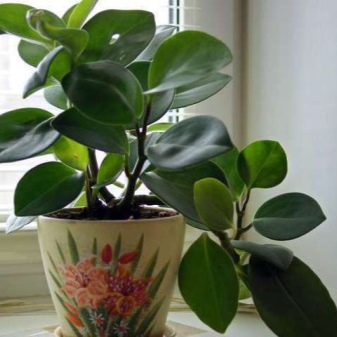
They look like discolored areas. So, the leaf can lose its beautiful natural dark green color and become lighter. With the wrong lighting for a flower, such sunburns can appear on several of its leaves at once.
In order for the plant to grow well, it is recommended to create calmer conditions during the daytime - for example, remove it from the windowsill, which is brightly lit, to another place. In order that the flower does not need to be constantly moved from place to place, it should be immediately placed in that area of the apartment where the lighting is sufficient, but not too bright. Some experts in the care of such flowers recommend placing peperomia not on windowsills, but at a short distance from them.
It should be noted that some types of flowers are more demanding on light. These include, for example, variegated specimens. For the purpose of adequate growth, they can also be placed on the windowsill. Quite often, variegated specimens are also placed on the shelves of cabinets inside the room. With this placement, experts recommend that you be sure to monitor the condition of the flower. If its leaves begin to fade, then the plant should be urgently moved to a brighter place.
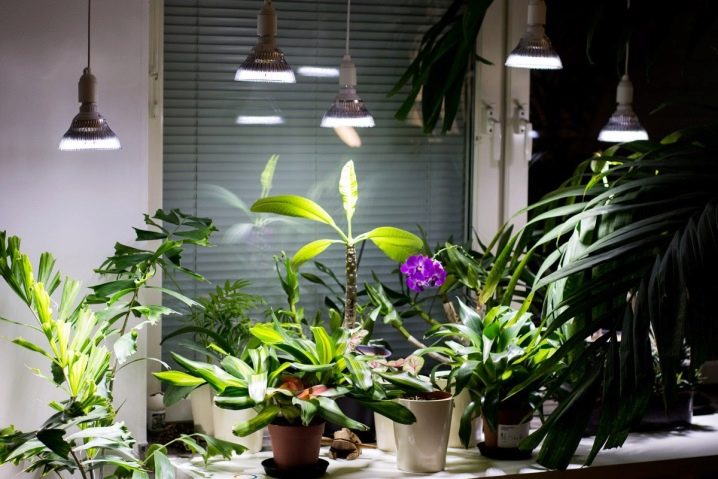
Experts recommend doing this, if possible, from mid-October to the end of February. At this time, the length of daylight hours decreases. The flower, for its good growth, requires at least 15-16 hours of light on the leaves.
Temperature and humidity
Peperomia is a plant that, when growing, does not require a constant change in temperature. Therefore, it is recommended to maintain the selected temperature, if possible, throughout the entire calendar year. Even in winter, it does not need to be specially changed.
The flower is unpretentious and grows well at temperatures around 22-24 degrees. However, even when the temperature drops to 20 degrees, it does not lag behind in its growth. Experts advise that you should not allow too much change in the temperature in the room where the plant is located. So, if the temperature in the room for some reason during the winter period drops to 14-15 degrees, then the plant can simply get sick.
In order to avoid adverse consequences in the case when the temperature in the room decreases, it is imperative to move the flower to more favorable conditions. So, peperomia must be urgently removed from the cold windowsill.
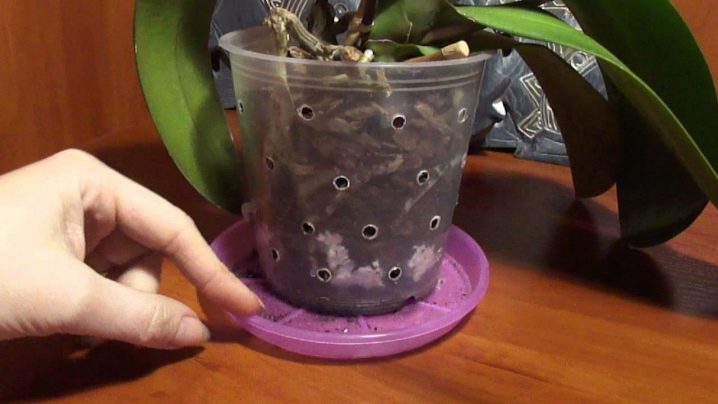
Peperomia adapts fairly well to small changes in indoor humidity. However, with a strong decrease in this indicator, flower growth can slow down significantly. To maintain optimum humidity, experts recommend, for example, sprinkling the pebbles that cover the ground with water. If the humidity in the room is slightly increased, then, according to the opinions of many experts, the vital activity of the plant will not be disturbed in any way.
Watering
This plant is adapted to life with low soil moisture, so watering should be moderate.You need to focus on the condition of the soil, water only with a dry top layer (at least 3 cm). In summer, it is about 1 time in 10 days in winter, 1 time in 2-3 weeks. The water should be soft and warmer than the room temperature. After a while, it is imperative to drain the excess liquid from the pan.
Transfer
The frequency of transplanting depends on age and species. Annually only young plants up to 3 years old. Large-leaved - no more than once every two years, small-leaved - once a year. The most suitable time is spring.
The root system of this flower is small, so it is worth choosing a small pot. The new container should be approximately 1.5 times larger than the old one. Since the roots of peperomia grow slowly, too large a pot is undesirable. Tall ceramic
When transplanting, it is very important to ensure good drainage. Layer not less than 6 cm
After holding the container for 2 weeks in partial shade. When the plant leaves, return it to its usual place.
Popular types of peperomias
Peperomia wrinkled (Peperomia caperata)
An exquisite miniature plant with small, dark green, corrugated leaves on long fragile petioles. Leaves are densely collected on shortened stems. Graceful spike-shaped inflorescences, snow-white, like a cloud, rise above the dark mass of leaves. A very attractive plant for indoor floriculture. Soil: nutritious loose mixture of leafy, humus earth and sand (1: 1: 0.5).
Peperomia clusiifolia (Peperomia clusiifolia)
A large plant with ascending, thick fleshy stems rooting at the lower nodes. The leaves are alternate, with short petioles (no more than 1 cm), large (up to 15 cm long, 6-8 cm wide), obovate with a blunt or notched apex and more or less wedge-shaped, sometimes slightly auricular base; very thick, fleshy, dark green with a reddish tint and dark purple narrow border around the edge, matte. Homeland - Antilles, Venezuela. In indoor culture, the garden form Variegata is also well known - with leaves along the midrib, dark green with light green blotches, further to the periphery - milky white or yellowish with a reddish tint and a bright purple border along the edge. There are variegated forms of yellowish or reddish shades.
Peperomia magnoliaefolia
Plants with profusely branching, erect or ascending fleshy reddish stems rooting at the lower nodes. The leaves are alternate, with short (2 cm) slightly winged petioles up to 15 cm long., 3-8 cm wide., Rounded to obovate-elliptical almost spatulate, with a rounded, often notched top and a wedge-shaped or suddenly narrowed base. Thick, leathery, green, shiny. Homeland - Antilles, Panama, north of South America (Venezuela, Colombia, Guiana). In addition to the typical shape, the Variegata garden form with irregular white and yellow spots on the leaves is very popular. A species close to Peperomia obtusifolia (Peperomia dull-leaved).
Peperomia magnolia-leaved. Michael wolf
Peperomia pereskiifolia
A plant with long ascending, later lodging and rooting obtuse ribbed stems. Leaves 3-5 in whorls, 3-5 cm long., 2-3 cm wide., Elliptical or rounded-rhomboid, with a blunt tip, three arcuate veins, very tough, leathery, dark green. Homeland - the center and north of South America, Nicaragua, Venezuela, Colombia, Brazil, Peru.
Peperomia silvery (Peperomia argyreia)
A compact plant with a shortened stem, bearing alternate crowded, rosette-like leaves. Leaves with long (more than 10 cm) dark purple petioles, 6-9 cm long., 5-8 cm wide., Ovate, with a short-pointed apex and a thyroid base, with 9-11 arcuate veins, on top of the veins - dark green , between veins - light, silvery, below - light green. Homeland - the north of South America, Venezuela, Brazil.Soil: leaf and compost soil, sand (2: 2: 1).
Peperomia gray-silver (Peperomia griseoargentea)
The species is similar in growth form to the previous one. Leaves 8-9 cm long., 3-6 cm wide., With long petioles exceeding the length of the plate, rounded-ovate, blunt-pointed at the apex, cordate or thyroid at the base with 7-9 arcuate veins, silvery-green, shiny, with slightly wavy surface and edge. Homeland - Brazil. In indoor culture, the garden form Nigra with black-green leaves along the veins is also well known.
Peperomia obtusifolia
A species very similar to Peperomia magnolia-leaved, from which it differs in the details of the structure of the ear and the fruit. In a vegetative state, it is hardly recognizable by a more extended form of growth, slightly less foliage and a duller top of the leaves. Homeland - Antilles, Mexico, center and north of South America (Venezuela, Colombia, Suriname). Several garden forms are known: Alba - with milky-white or creamy leaves; Albo-variegata - with leaves, gray-green in the center, silvery along the edge, etc. The plant is rather undemanding to care, but light-requiring. The soil must be fertile: a mixture of leaf, turf, peat and sand (1: 1: 1: 1).
Peperomia is gray-silvery. James steakley
Types and varieties of dolichos with photos
Dolichos Lablab
The homeland of this species is Western Europe. On the territory of Russia, it is cultivated as an annual. The height of such a climbing plant is about 500 cm. Strongly branching stems are decorated with green and purple leaves. During flowering, brushes are formed on the bush, which include 40 small flowers each. The length of racemose inflorescences can reach half a meter, outwardly they look like garlands. The color of the flowers can be pink, white or cream. They don't smell like anything. Flowering begins in the middle of the summer period, and ends with the first frosts.
Dolichos Ordinary
The length of such a vine can be up to 450 cm. The leaves can be colored green or purple. The homeland of this species is considered to be Western Europe, where it is cultivated as an ornamental perennial. Flowering occurs in mid-summer. At this time, long large inflorescences are formed on the bushes, consisting of many pink, white or cream flowers. When flowering ends, in place of flowers are formed pods of dark purple the shade inside which the seeds are (edible beans).
Dolichos Ruby Moon
The flexible stems of this vine reach about 400 cm in length. The heart-shaped leaves in the upper part are pointed, they are painted in a deep green color with a purple tint. Long brushes consist of large lilac flowers. Flowers of this type can be used for cutting, they stand in the water for a long time and smell very nice at the same time. The species blooms in mid-June. At the end of flowering, dark purple pods are formed on the bush, which do not fall until the second half of autumn and are an excellent decoration for dolichos.
Dolichos Purple
This herbaceous ornamental vine is cultivated as an annual. The length of the shoots is about 300 cm, they are decorated with large heart-shaped leaf plates with a pointed tip. The leaves are painted green with a violet-red tint. Long fragrant brushes consist of flowers of pink, purple, white or crimson color. Flowering is observed in the middle of the summer period, and after its end, pods with edible beans appear on the bush.
Dolichos Hyacinth
The length of the stems of such a herbaceous decorative liana is about 400 cm. Large heart-shaped leaves have a pointed tip, they are colored green with a purple tint. The long fragrant brushes include lilac flowers. This liana blooms in the middle of the summer period. In place of the faded inflorescences, pods of a dark purple color appear, inside which there are edible seeds.
Dolichos Pink Moon
This species is considered the most decorative of all known dolichos species. The length of its stems is about 400 cm. The heart-shaped large leaf plates are pointed at the top, and they are painted in a deep green hue. Purple long tassels have a pleasant scent. When flowering is over, dark purple pods are formed with beans inside.
Dolichos Purple Garland
In length, the stems of such a vigorous liana can reach about 600 cm.The dark green large leaves have a heart-shaped shape. During flowering, purple brushes are formed, which outwardly resemble spectacular garlands. At the end of flowering, the bush retains its decorative effect due to the formed dark purple pods, in which the seeds ripen.
Dolichos Lilac Cascade
Unlike other species, this plant has branched stems that are more compact. One vine can grow up to 30 shoots. Large heart-shaped foliage is colored dark green and has a pointed top. This species does not bloom very abundantly (when compared with other species), however, its long brushes, painted in purple, look very impressive. When flowering ends, the bush is decorated with dark purple shiny pods formed in place of flowers, inside which are seeds (beans).
Basic rules of care and maintenance
First of all, peperomias do not like too moist soils. So, in the summer we water the flower only when the soil is dry, and in cold periods, once every three weeks (and more often).
This does not apply to species with not very fleshy leaves: for such, it is undesirable for the earth to dry too much. Water temperature should be warmer than air by a couple of degrees. But the air can be of any humidity.

Peperomias usually like shade, but they also need light. It is best to place the flower on the east side of the apartment, or on the west. On the south one will need blackout. In winter, you may need a fluorescent lamp.
As for the temperature for peperomia in the room, it depends on what is outside of it during the season. In summer and spring, peperomia is comfortable at a temperature of 20-22 degrees above zero. In cold periods - from 18 to 22 degrees. The soil temperature should be 17-20 degrees.
It is dangerous to take this flower to fresh air, as well as to allow drafts.
Correct transplantation is no less important for peperomia. It is best done in the spring. We transplant young flowers every 12 months, from three to four years - once every 24 months. Each time we look for pots 1.5 times wider than the previous ones. And they shouldn't be too deep.
As for the soil, peperomia loves only fertile and loose soil. Ideally, it should consist of sand, humus and peat. It is best not to use too heavy soils.

Drainage is needed in any case. If the leaves of your flower are not very large and tender, it is worth adding sphagnum moss to the soil. Top dressing of peperomia is usually not needed, but complex fertilizers can be applied a couple of times a month. They don't do this in winter.
But to propagate peperomia is best done by cuttings. In this case, use "Kornevin". You will also need a greenhouse container. In addition, if you have a flower with dense leaves, you can root them as well.
Among the diseases, the most common are mycoses (various rot), thrips, spider mites, scale insects, mealybugs.
They also have problems with poor care. So, fallen leaves indicate poor watering.
Mr. Dachnik explains: the benefits or harms of peperomia
This flower is not only beautiful, but also useful. Its leaves produce a special substance that kills streptococci and staphylococci. Scientists have proven that when it is present in the room, the number of bacteria in the air is reduced by 50-70%, which is especially useful in children's rooms. And according to popular superstitions, peperomia is a "flower of love", it evokes in people a desire to take care of loved ones and protect them.There is a sure sign: peperomia has appeared in the house - expect good changes in life.
 Belonging to the Pepper family, Peperomia is an amazing plant that amazes with its huge species diversity. Representatives of her family are so different from each other that when looking at them it is difficult to believe in their common origin.
Belonging to the Pepper family, Peperomia is an amazing plant that amazes with its huge species diversity. Representatives of her family are so different from each other that when looking at them it is difficult to believe in their common origin.
Among almost 100 indoor species of Peperomia, there are erect, bushy and ampelous representatives of the flora of different colors.
Each of them is beautiful in its own way and has a lot of advantages. Before you acquire an adorable Peperomia, you should understand this variety in order to choose exactly the green pet that will be the nicest of all.
Below is Peperomia: types, photos and names:
Rosso

Blanda

Columella
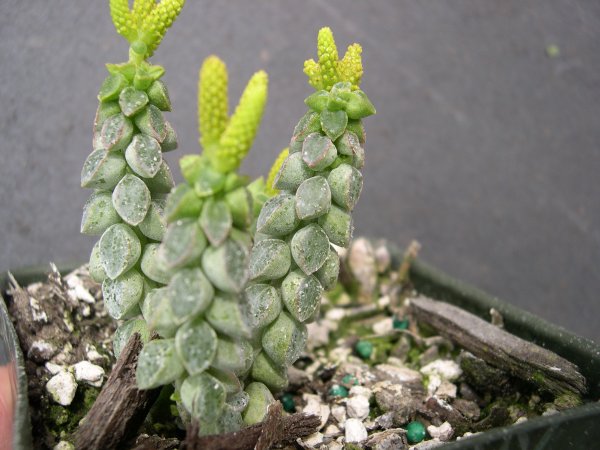
Graveolens
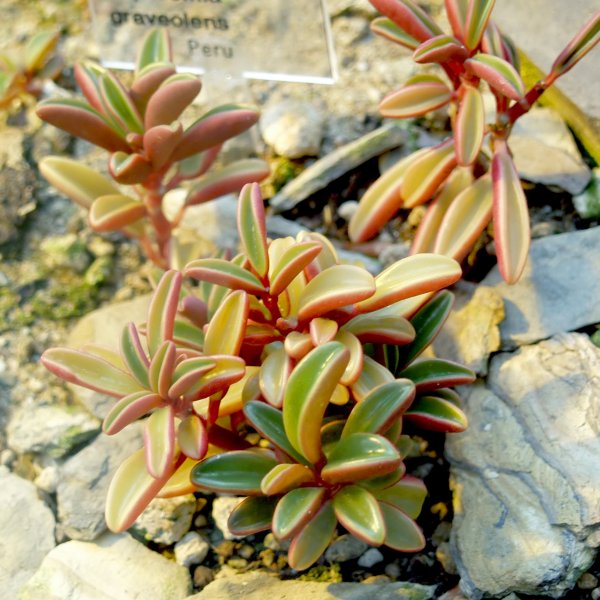
Caperata lilian
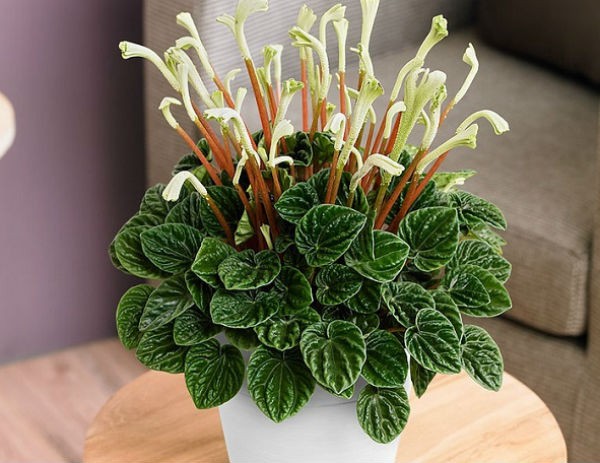 Marmorata
Marmorata 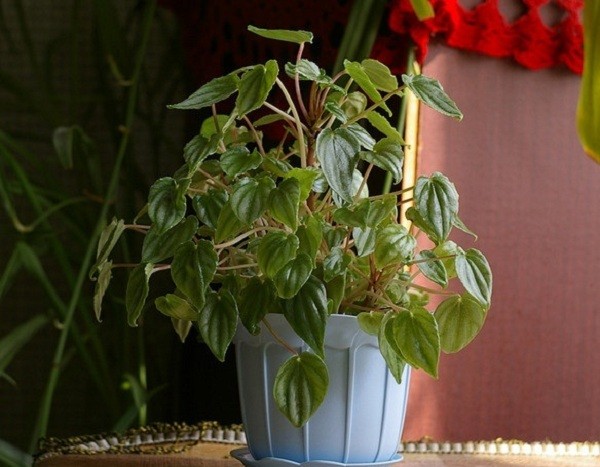 Peperomia verticillata
Peperomia verticillata 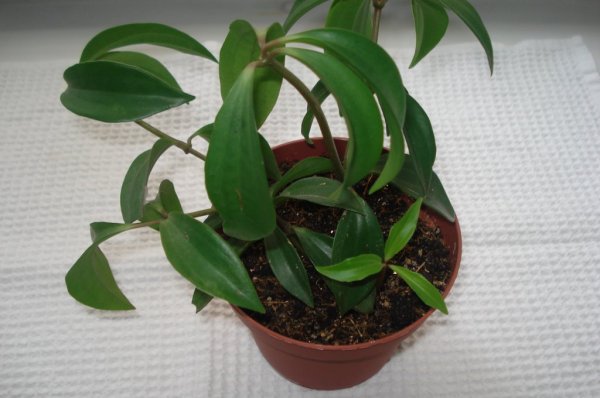 Pereskiaefolia
Pereskiaefolia  Serpens
Serpens 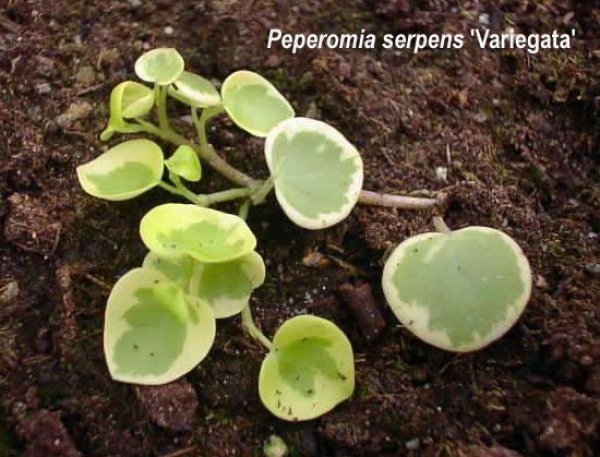 Argyreia
Argyreia  Glabella
Glabella 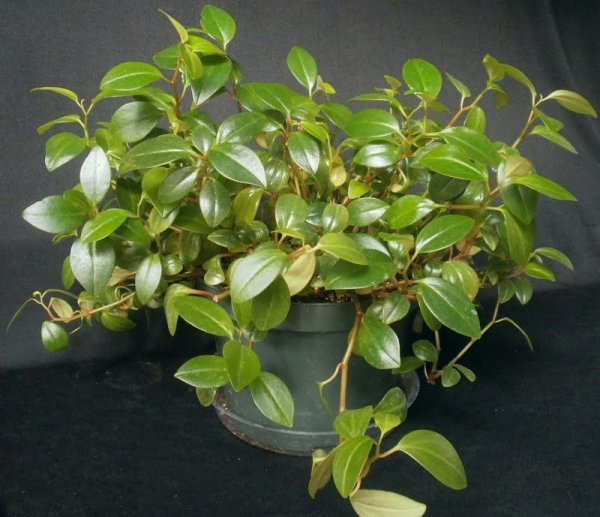 Green gold
Green gold 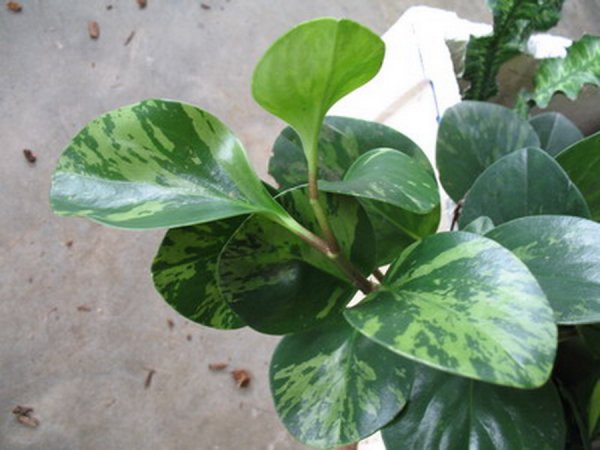 Rotundifolia
Rotundifolia 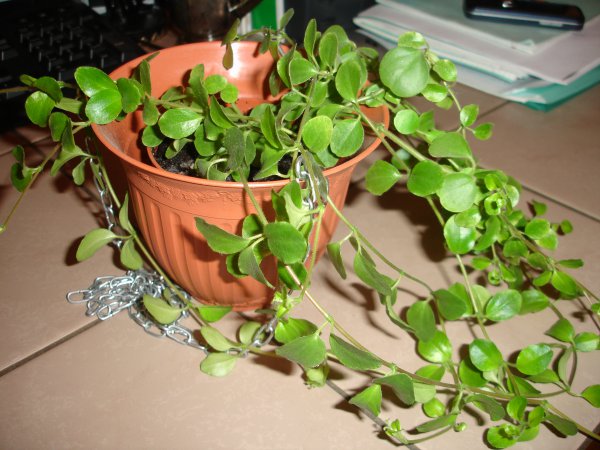 Watermelon
Watermelon 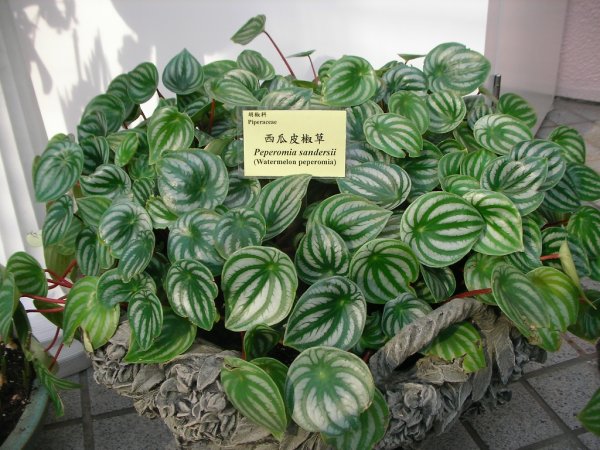 Velutina
Velutina  Variegata
Variegata 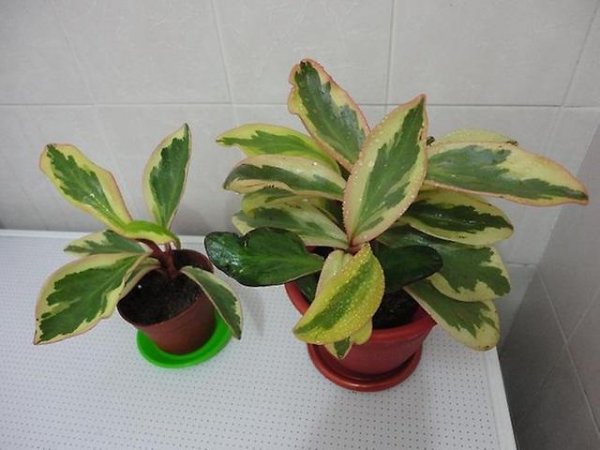 Caperata red luna
Caperata red luna 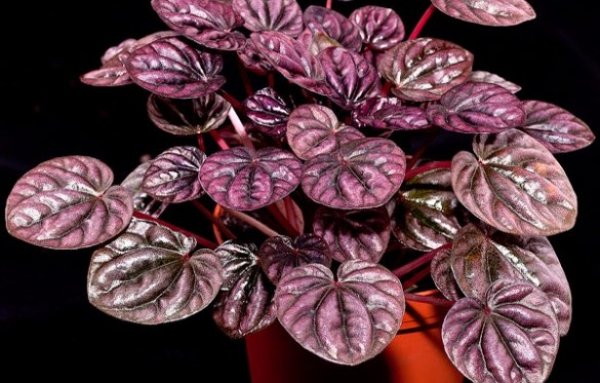
Caring for knifophia in the garden
It is quite easy to grow knifofia in your garden. During the first season, after the plant is planted in open soil, it must be systematically watered, loosened the soil surface, and also remove weeds from the site. The first flowering can be seen only in the next season and only if the plant's root system gets stronger. And for this, it is necessary to moisten the soil in a timely but moderate manner, and also to weed and loosen the soil.
How to water and feed
Watering is carried out only after the topsoil dries out. If the weather is hot and dry, then you will have to water more often than usual. To reduce the number of weeding, loosening and watering, it is recommended to cover the surface of the site with a layer of mulch (sawdust or peat).
Top dressing of bushes is carried out at the beginning of the spring period before green stems grow or during the formation of buds. To do this, use nitrogen-containing fertilizers or organic matter, and when the bush fades, it is fed with potash fertilizer.
Wintering
When grown in mid-latitudes, such a crop is not long-lived, however, for several seasons, knifofia may well decorate your garden. In a faded bush, you need to cut out all the arrows, but you do not need to touch the foliage. When preparing a flower for wintering, its leaf plates are neatly tied, then the bush itself must be covered with a layer of peat chips, which are thrown on top with spruce branches. On top of such a shelter, you need to lay a moisture-proof covering material, for example, a film or roofing material. In the springtime, the shelter from the bushes must be removed. Then inspect the bushes and cut off any frost-damaged or yellow leaf plates.
Transfer
If you dig a bush for the winter and bring it into the house, then it will thereby be possible to extend its life. To do this, the flower is removed from the soil, then it is planted in a voluminous pot and placed in a cool room for the winter. Make sure that the root system of the knifofia does not dry out, for this you need to water it with a little water if necessary. Planting a bush in open soil is carried out in the last spring or first summer weeks.
Diseases and pests
If you strictly adhere to the agrotechnical rules of this culture and properly care for the knifofia, then the flower will not hurt often. Leaf-eating pests can settle on it. If this happens, then the bushes need to be treated with an insecticidal solution.
Watering such a flower too often and abundantly can cause rot on the root system. The plant can be saved only if the disease is detected at the very beginning of its development. For this, the bush and the surface of the soil near it are treated 2 or 3 times with a solution of a fungicidal preparation. If the knifophia is very badly affected by rot, then it should be removed from the ground and destroyed.If this is not done, the infection can spread to neighboring plants.
Knifofia Garden flowers
Pests and diseases
The plant is most often affected by mealybugs, thrips, spider mites.
Rubbing the leaves with an alcohol solution will help get rid of the mealy worm. The reason for the appearance of a spider mite is considered to be low humidity, as a result, a cobweb forms and the flower begins to dry out and lose leaves.
To get rid of the pest, wiping the leaves with a soapy sponge, a warm shower, regular spraying will help; in case of severe damage, it is recommended to use a 0.15% actellik solution.
Low humidity and high room temperatures are considered optimal conditions for thrips to develop.
The pest lays entire colonies, as the disease progresses, the upper side becomes gray-brown with a silvery sheen, the disease is not immediately noticeable on variegated plants. Spraying with insecticides will help get rid of thrips.
Decay occurs under the influence of fungal infections arising from waterlogging and overconsolidation of the soil. Transplanting into new soil, reducing watering will help get rid of the disease.
If the dwarf virus is infected with a dwarf virus, the flower must be immediately removed from other plants.
You should also be afraid of nematodes and scale insects, when they appear, it is necessary to carry out treatment with insecticides.
What do peperomias look like?
Peperomias are extremely varied in shape, size and leaf color. There are species with rounded, oblong, lanceolate, heart-shaped leaves - from miniature and delicate to large and fleshy. The color of the leaves can be light or dark green, brown, olive, golden, silvery striped, with white or yellow spots, stains. Peperomia leaves are most often whole-edged. Their surface can be smooth or pubescent, as well as rough, wrinkled.
Small white peperomia flowers are collected in dense spike-shaped or cob-shaped inflorescences on long peduncles. A well-developed bush usually has 10-15 inflorescences. Under indoor conditions, seeds do not ripen in peperomia.
Peperomia plant: varieties with photos and names
Today, just over 1000 different species of the described plant are known. Not everyone is suitable for home decoration, but there are many options.
The big plus of peperomia is its slow growth, hence the cherished compactness and neat appearance. The pot will fit the root system of the plant for a long time, which is nice, as it eliminates frequent transplants. For the same reason, a flower that is convenient to maintain does not require constant pruning.
So, below is a description of the peperomia plant: varieties with photos and names. There is a conditional division of the types of the described flower into subspecies:
- ampelous;
- succulents;
- bush.
Each subspecies is characterized by its own advantages and disadvantages, but each arouses interest and sympathy. There is a belief that this home flower attracts prosperity to the house and is able to smooth out tension in relationships with its presence.
The positive effect of peperomia on air quality in an apartment has been proven, by destroying streptococci and staphylococci. By this, the plant stops the spread of certain viral diseases.


